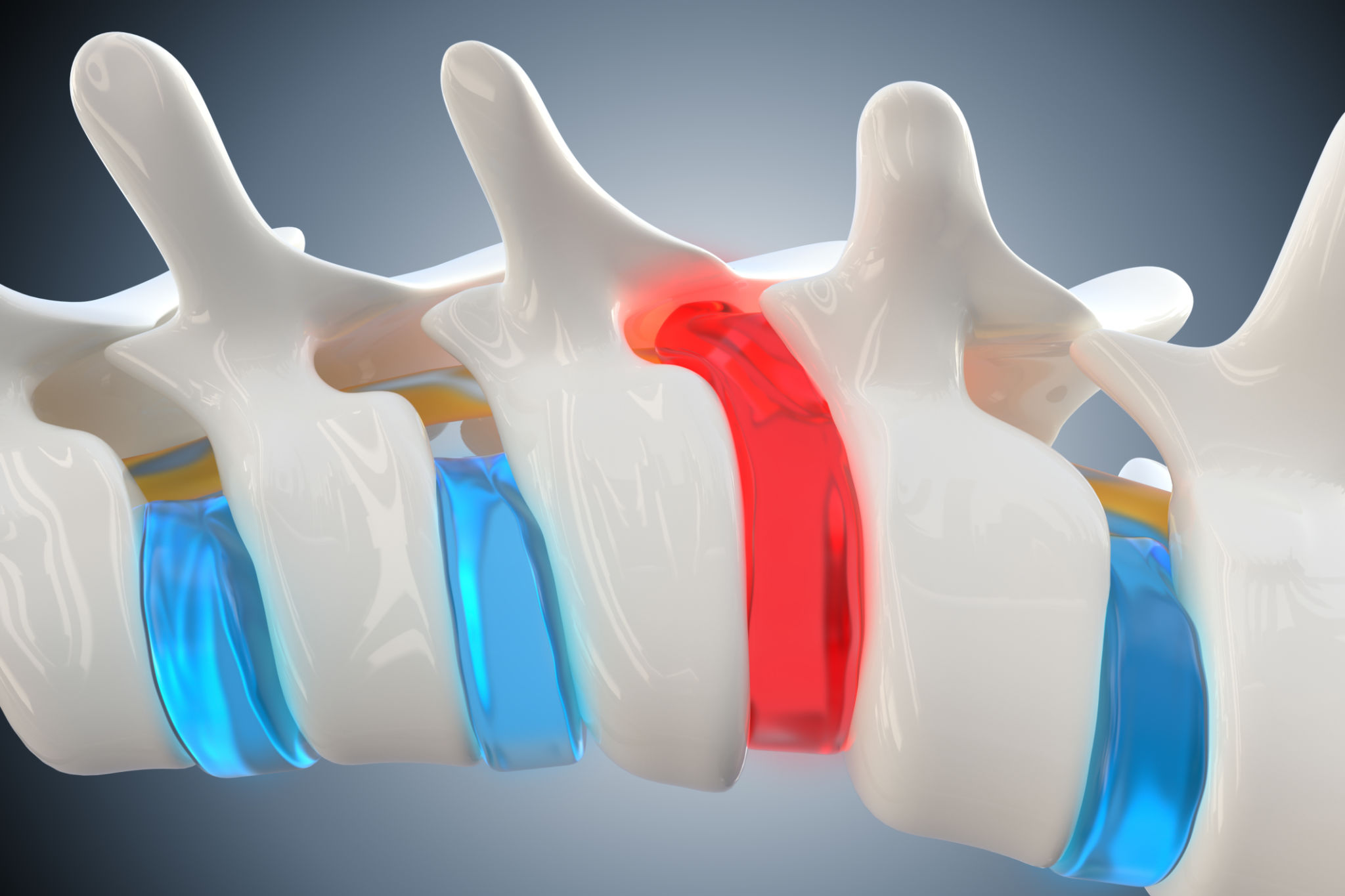- (213) 369-4583
- Monday - Friday
- 9 am - 5 pm
Why do People Get a Herniated Disc?

May 14, 2022
Your spine is composed of 33 individual bones (known as vertebrae) stacked over each other in the shape of a staircase. The bones are interlocked and have 23 vertebral discs between them that provide cushioning and also work as shock absorbers to protect the spine. These discs are round-shaped with a thick outer layer (known as annulus) and a soft gel-like center from the inside (known as nucleus).
A herniated disc occurs when the soft gel-like structure or nucleus pushes out through the annulus due to a crack or a tear in it. This creates a bulge within the spinal canal. Since the spinal canal has limited room, it cannot accommodate spinal nerves and a herniated disc at the same time. As a result, a herniated disc puts pressure on the nearby spinal nerves causing the patient to feel pain and numbness. This can happen in any part of the spine, however, it is most commonly found to occur in the lower spine.
Pinpointing the cause of a herniated disc is easier said than done. There are a lot of factors that can contribute to the herniation of a disc but it is difficult to know the exact reason why people get a herniated disc. With that being said, in what follows, we will explain the major causes of a herniated disc identified by medical science. You will also be educated on the prevention and possible treatments of a herniated disc.
Related readings: Is Disc Replacement Surgery Safe?
Herniated Disc due to Aging
With aging, it is natural to experience wear and tear in different parts of the body. The spine is no exception! Over the years, due to use or misuse of the spine, the outer layer of a spinal disc gets brittle making it more vulnerable to ruptures and cracks. There comes a point when it is no longer able to hold the nucleus inside it. With a little pressure, the nucleus finds its way through the ruptured annulus and makes a bulge within the spinal canal. It is common for people to show signs of disc herniation in the age bracket of 30-40 depending upon their physical condition.
Herniated Disc due to an Injury
One of the reasons to develop a herniated disc at an early age is damage to the spine due to some injury. A spine can be injured in a lot of ways;
- During a Car or motorbike accident
- While lifting heavy weights in an improper form
- Athletes who participate in extreme sports like American football and wrestling
- Involuntary Jerks
These reasons and some others expedite the wear and tear of the disc and thus making patients more susceptible to developing a herniated disc.
Genetics
According to research published in the European Spine Journal, the risk of getting a herniated or degenerative disc can be increased due to genetic predispositions. It means that people can inherit certain traits from their families which make them more susceptible to developing degenerative disc diseases. Families with a history of spinal issues must be more cautious about their spine health.
Physical Activities Causing Disc Herniation
The spine is one of the basic components of our body and we use it in almost every physical activity we perform. These acts, if performed inappropriately, put pressure on the spine resulting in its deterioration. These acts include;

- Driving for long periods. Some people drive for hours without rest like truck drivers, courier guys, and chauffeurs. They develop back problems sooner than other people.
- Being physically inactive for months also causes stiffness of the spine. It also leads to obesity which puts more pressure on the spine than it can bear.
- Exercising without maintaining proper form. A lot of spinal injuries happen in gyms where people lift heavy weights without the guidance of professional trainers.
- Walking, jogging, or running on a bumpy and uneven surface also damages the spine
- According to some doctors, smoking decreases the oxygen supply to the body which makes the spine deteriorate faster.
- Nature of occupation. Nowadays, most people are required to sit in front of computer screens for hours to do their job. Sitting for long periods in a chair can be problematic for spine health.
Treatments for Herniated Disc
Depending upon different factors like physical health, age, and severity of damage, different kinds of treatment options are available. Mainly, these treatments are divided into surgical and nonsurgical treatments.
Non-surgical Treatments
Healthcare professionals usually start with conservative treatments to heal a herniated disc. Based on the diagnosis, doctors design a rehabilitation program for the patient that includes all or some of the following;
- Gentle massage of specific body parts
- Physical therapies
- Ice and heat therapy
- Electrical muscle stimulation
- Pelvic tractions
- Muscle relaxants
- Depending upon the severity of the pain, the doctor can recommned you anti-inflammatory medicines.
Surgical Treatments
The doctor keeps the patient under observation during the non-surgical procedures. If the patient does not show any signs of recovery or the pain returns after the treatment, the the doctor puts patient to surgical treatment. There are different surgical treatments available to treat herniated discs.
- Laminectomy
- Discectomy
- Spinal Fusion
The surgeon might also suggest replacing the disc through Artificial Disc Replacement Surgery as a permanent solution to the problem.
See Dr. Moksha Ranasinghe in Los Angeles for Spinal Surgery
If you are looking for a neurosurgeon for the treatment of your herniated disc, you don’t need to search anymore. Here at Southern California Brain & Spine Surgery, Dr. Moksha Ranasinghe provides top-quality healthcare services to patients with Herniated discs or any other back problems. She is an experienced neurosurgeon with top-rated profiles on platforms like Healthgrades and Yelp. You can easily schedule an appointment with her by filling out a contact form available on the website or you can directly call (213) 369-4583 and speak to someone at the facility.




